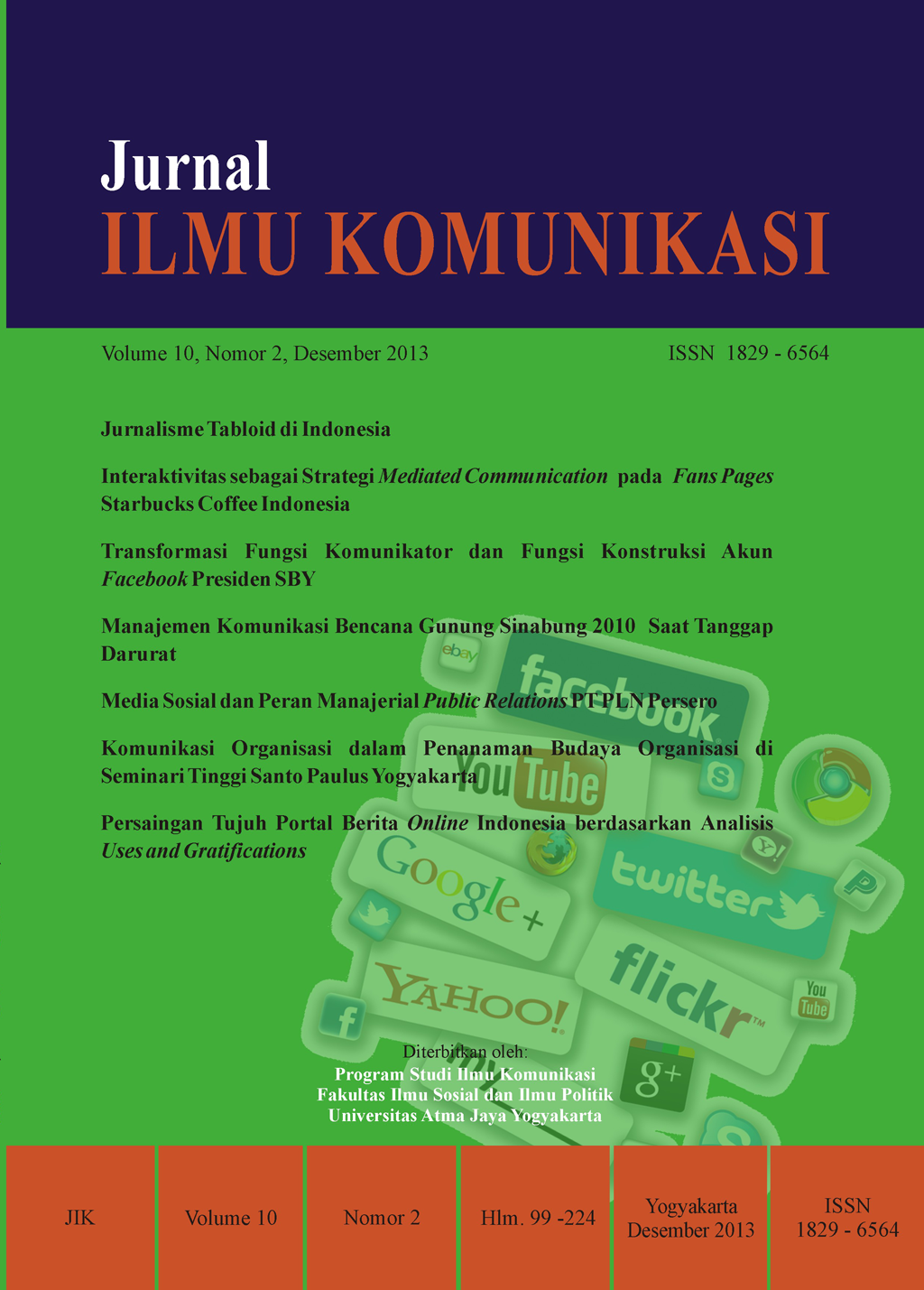Komunikasi Organisasi dalam Penanaman Budaya Organisasi di Seminari Tinggi Santo Paulus Yogyakarta
DOI:
https://doi.org/10.24002/jik.v10i2.352Abstract
Abstract: Organizational culture is not just a relative habit or moderate behavior, but rather as a unique characteristic of an organization. Organizational culture is a metaphor to depict norms, feelings, and activity patterns of a group as well as a communication climate rooted from a set of same norms. St. Paul Seminary is an institution that educates diocesan priests or pastors candidates. This study is based on case study and using interviews, document searches and direct observation in the data collection. The results show that the organizational communication applied in St. Paul’s Seminary is both vertical and horizontal.
Abstrak: Budaya organisasi bukan sekedar kebiasaan relatif atau perilaku rata-rata (moderate behavior), melainkan sebagai karateristik unik suatu organisasi. Budaya organisasi merupakan metafora untuk menggambarkan norma, perasaan, dan pola-pola aktivitas suatu kelompok serta merupakan iklim komunikasi yang berakar pada seperangkat norma yang sama. Seminari Tinggi Santo Paulus adalah lembaga pendidikan yang mencetak calon-calon imam diosesan atau pastor. Studi ini berdasarkan pada studi kasus dan menggunakan wawancara, penelusuran dokumen dan observasi langsung dalam pengumpulan data. Hasil yang diperoleh memperlihatkan bahwa komunikasi organisasi yang diterapkan di Seminari Tinggi Santo Paulus bersifat vertikal dan horisontal.
Downloads
Published
How to Cite
Issue
Section
License
Jurnal ILMU KOMUNIKASI is an academic journal. As such, it is dedicated to the open exchange of information. For this reason, JIK is freely available to individuals and institutions. Authors who publish in Jurnal ILMU KOMUNIKASI will release their articles under the Creative Commons Attribution (BY) License. This license allows anyone to copy and redistribute the article in any medium or format as well as remix, transform, and build upon the material for any purpose, even commercially as long as they credit the authors for the original creation. For details of the rights authors grants users of their work, see the "human-readable summary" of the license, with a link to the full license. (Note that "you" refers to a user, not an author, in the summary)
 This work is licensed under a Creative Commons Attribution 4.0 International License.
This work is licensed under a Creative Commons Attribution 4.0 International License.














